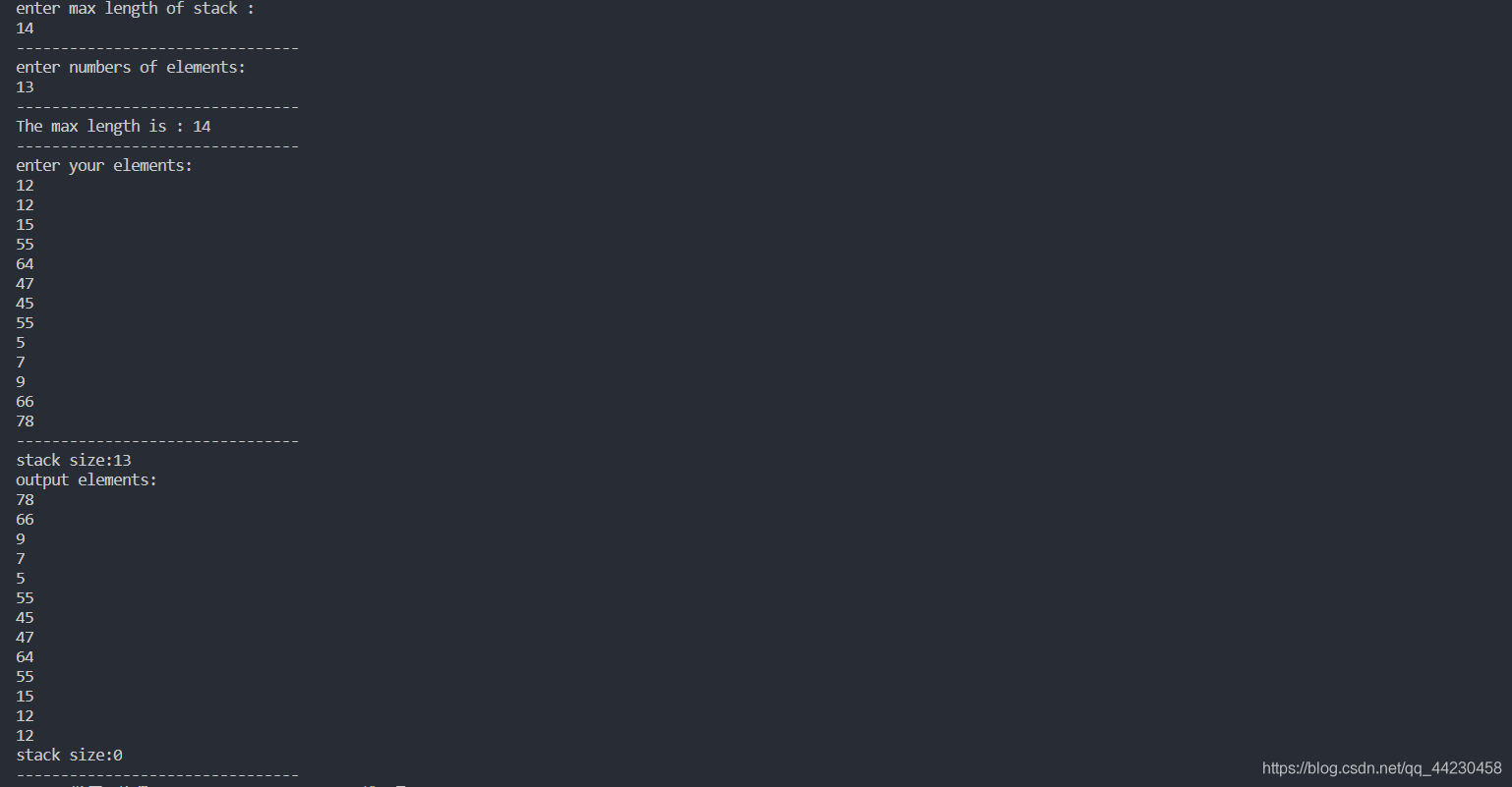一个简单的自定义栈用C++实现
本文最后更新于:2021年12月21日 晚上
用C++实现一个简单的自定义栈
自定义一个栈(In C++)
在头文件 my_stack.h 中自定义栈
1. 自定义栈的类的数据成员和公有函数:
1
2
3
4
5
6
7
8
9
10
11
12
13
14
15
16
17
18
19
20
21
22
| #pragma once
#include <iostream>
using namespace std;
template <typename Type>
class Stack
{
private:
Type *stk;
int MAXN;
int top;
public:
Stack(int size);
~Stack();
bool empty() const;
bool full() const;
bool push(Type x);
bool pop();
Type get_top() const;
int size() const;
int Max() const;
};
|
2. 函数的定义:
1
2
3
4
5
6
7
8
9
10
11
12
13
14
15
16
17
18
19
20
21
22
23
24
25
26
27
28
29
30
31
32
33
34
35
36
37
38
39
40
41
42
43
44
45
46
47
48
49
50
51
52
53
54
55
56
57
58
59
60
61
62
63
64
65
66
67
68
69
70
71
72
73
74
75
76
77
78
79
80
81
82
| template <typename Type>
Stack<Type>::Stack(int size)
{
MAXN = size;
stk = new Type[MAXN];
top = -1;
}
template <typename Type>
Stack<Type>::~Stack()
{
delete stk;
}
template <typename Type>
bool Stack<Type>::empty() const
{
if (top == -1)
{
return true;
cout << "underflow" << endl;
}
return false;
}
template <typename Type>
bool Stack<Type>::full() const
{
if (top == MAXN - 1)
{
return true;
cout << "overflow" << endl;
}
return false;
}
template <typename Type>
bool Stack<Type>::push(Type x)
{
if (full())
{
return false;
cout << "overflow" << endl;
}
stk[++top] = x;
return true;
}
template <typename Type>
bool Stack<Type>::pop()
{
if (empty())
{
return false;
cout << "underflow" << endl;
}
top--;
return true;
}
template <typename Type>
Type Stack<Type>::get_top() const
{
if (empty())
{
return false;
cout << "underflow" << endl;
}
return stk[top];
}
template <typename Type>
int Stack<Type>::size() const
{
return top + 1;
}
template <typename Type>
int Stack<Type>::Max() const
{
return this ->MAXN;
}
|
在源文件my_stack.cpp中,实现栈的基本操作
1. 创建对象,实现栈的基本操作。
1
2
3
4
5
6
7
8
9
10
11
12
13
14
15
16
17
18
19
20
21
22
23
24
25
26
27
28
29
30
31
32
33
34
35
36
37
38
39
40
41
42
43
44
45
46
47
| #include <iostream>
#include "my_stack.h"
using namespace std;
int main()
{
int n, x, ele, i;
enter:
cout << "enter max length of stack :" << endl;
cin >> n;
cout << "--------------------------------" << endl;
cout << "enter numbers of elements:" << endl;
cin >> x;
cout << "--------------------------------" << endl;
if (x >= n)
{
cout << "failed! numbers of elements must less than max length!" << endl
<< "please enter again!" << endl;
goto enter;
}
Stack<int> s(n);
cout << "The max length is : " << s.Max() << endl;
cout << "--------------------------------" << endl;
cout << "enter your elements:" << endl;
for (i = 0; i < x; i++)
{
cin >> ele;
s.push(ele);
}
cout << "--------------------------------" << endl;
cout << "stack size:" << s.size() << endl;
cout << "output elements:" << endl;
while (s.empty() != true)
{
cout << s.get_top() << endl;
s.pop();
}
cout << "stack size:" << s.size() << endl;
cout << "--------------------------------" << endl;
return 0;
}
|
2. 用模板类的时候注意编写的格式
| 模板类外函数定义:
template <typename 类型参数>
函数类型 类名<类型参数>::成员函数名(形参表)
{
……
}
|
运行结果


